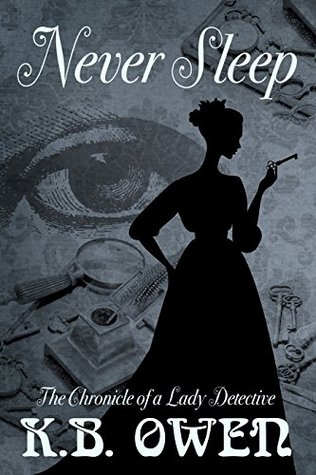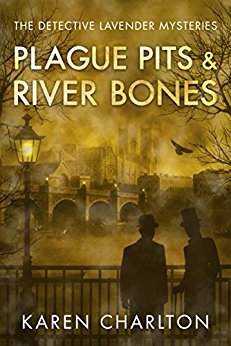
About L.A. Chandlar
LA CHANDLAR is a 2019 Agatha nominated, National Best Selling author with Kensington Publishing. Her debut novel, The Silver Gun – Book One in the Art Deco Mystery Series debuted in 2017. The Gold Pawn (Best Historical Agatha Nominated) released 2019, and Book 3, The Pearl Dagger, releases August 2019. Laurie takes a fresh look at the innovative and artful side of 1930s New York City and features Mayor Fiorello La Guardia. Laurie lives in New York City with her family.

Interview
What do you enjoy most about writing historical mysteries?
- I love bringing into play a larger picture of the culture or the era. I feel like we learn about history in pockets and it’s so fun to learn about what was going on at the same time. For instance, we all know about the famous crash of the Hindenburg, but most of us don’t know it was tooling around back and forth across the Atlantic frequently. So it was a part of the New York City skies quite a lot. It’s also why I love to bring in cameo appearances of famous people, often before they were household names.
How long did it take you to write your first book?
- The first one was hard to figure out timing. I got the idea for the series right after I moved to New York City and we decided to start having children. Needless to say, I had a hard time carving out the hours to write. But I could read, so for a long time, I immersed myself in 1930s history and biographies of Fiorello La Guardia. By the time I figured out how writing works for me personally, because we are all unique and there’s no formula, then it went fast because I’d developed so much. It took about six months to write the first draft of The Silver Gun (of course that was after about seven years of research! Lol).

Describe the historical background of New York during your story.
- What I love most about this series, is the fact that often the 1930s is overshadowed by the Depression, and I show a different side. People automatically think soup lines and shanty towns. But despite all that, the thirties was a vibrant time full of innovation, women’s rights, art, humor… In some ways I feel like the 1920s and 30s were more modern and more like today than the 1940s and 50s. I think we regressed in some ways. Women were rising to prominent positions in the workplace before World War II and the lively spirit of Mayor La Guardia is inspiring. And funny! The humor of the time and of the mayor specifically is what I really love. So my protagonist is the top aide of the mayor’s, and through the story and through her perspective, I try to exemplify those qualities that I think our time has forgotten. The art and architecture of the time was vibrant and engaging, the cocktails were numerous and freeing right after Prohibition ended, and the era was smack dab in the middle of the two world wars. Yet, the beauty even in the midst of adversity was staggering. I think that’s why most people know what Art Deco is. For those two short decades, the art was distinctive and memorable.
Why are they called the Art Deco mysteries?
- Well of course they take place during the Art Deco era, and those words “Art Deco Mysteries” evokes that exact time frame. But it was also suitable because I wanted to show the vibrancy of art in that era (and in general). I have a piece of art in the background of each story that comes alongside a character as they navigate the mystery. I love those deeper levels, and I choose things that are rather unknown, or seen in a unique way. In The Silver Gun, Lane Sanders, the protagonist, comes across an old artist’s journal. The artist is a household name today, but then was not. In The Gold Pawn, Lane and later a villain, come across a famous classic novel that everyone knows but surprisingly few have actually read. And in The Pearl Dagger is my absolute favorite! In 1936 Orson Welles as part of the Federal Works Project, creates the first all-black theater cast and they perform Macbeth. They set the eerie play with a jungle and skeleton-esque stage. It was called Voodoo Macbeth. It was wildly successful, sold out ten weeks in a row and toured the country. I would do anything to go back in time to see it first-hand.



Who is Lane Sanders and what is she struggling with during The Gold Pawn?
- Lane Sanders is the aide to the ninety-ninth mayor of New York City, Mayor Fiorello LaGuardia. In The Silver Gun, Lane realizes that her own history is full of questions and secrets. So in The Gold Pawn she has to face the ghosts of her past and wrestle with not only the dark parts of her family history, but the darkness within herself. An actual gold pawn is the death card of a famous crime network boss and the entire book is about that pawn as they unravel the mystery to discover not just what that pawn means, but who is the player and who is the pawn.
What’s her occupation and what was it like in the 1930’s?
- As aide to the mayor, she handles secretarial duties, press releases and is generally a sounding board to the mayor. Lane was raised by her aunt, an artist and philanthropist. So her upbringing makes her more worldly and ahead of her time, but like the artists were in the Belle Époque era and in the Village downtown in the twenties and thirties. So Lane is more progressive than many women then in some ways, but I portrayed her as someone whom Gertrude Stein or Dorothy Parker would have raised. She does face in the office some fanny pats and degrading things of that sort, that I remember my mother and her friends having to face. In fact there’s a scene where Lane takes one of the handsy guys to task, and the setting was from a story my mom told me, but Lane’s reaction is what many of us women are prepared to do in the subway now. Let’s just say she utilizes those high heels of hers very well. Lane also sees herself as a self-proclaimed investigative reporter. And everything she does on a day to day basis in the stories is often accurate from articles about the mayor’s office and the fact that none of the reporters could keep up with him. There are so many articles that proclaim the insufficient number of adjectives and storm superlatives to describe Fiorello.

What’s a typical writing day like for you?
- Right now I do most of my writing in the mornings after my kids go to school. The first book was writing primarily at night after everyone else went to bed. I think writers need to continually flex with what works in different seasons. I had a harder year with the death of my father, and honestly, I was exhausted physically and emotionally. And yet, you still have to work, you still have to feed the kids, pay the bills… But my regular routines just didn’t work. I ended switching around the day and had an hour or so here or there to literally do nothing. I could watch TV or nap or whatever. Because if I didn’t do that, the rest of my time was fruitless.
What role does the setting play in the Art Deco mysteries?
- The setting is mainly New York City and Lane adores the city. It becomes another character. And the setting is what makes the story a world. I love it when I read a book and when I’m finished, I miss that world. A book can have an excellent plot, but if I don’t miss the world, I probably won’t read it again. So I hope that the city and its spontaneous capacity for beauty and excitement, along with Lane’s family life with her Aunt Evelyn, really make people enjoy diving into the books.
How’s the writing going for the Pearl Dagger?
- It’s great! It releases August 27th and I just finished up the last edits.

What can you tell us about the plot and the crime syndicate?
- At the end of The Gold Pawn, it is revealed who is behind the major crime syndicate. But at the beginning of The Pearl Dagger, the main characters don’t know yet. So it created a very fun writing situation wherein the reader is more informed than the characters. And you have to take into consideration readers who have not read the prior books. You absolutely can read The Pearl Dagger on its own. But if you’re a series lover, you’d probably enjoy the series more from starting at the beginning. In this book, a pinball gambling racket claims the life of friend and a new ring-leader of the syndicate rises to power. Spurred on by the possibility of the crime network spreading through Europe, Lane and Detective Finn Brodie head to London where not only do they hunt down the intentions of the new crime boss, but Finn has to face the ghosts of his own past that threaten to cripple not only the investigation, but his life and Lane’s.

Website | Twitter | Facebook | Instagram
Art Deco Mysteries





































